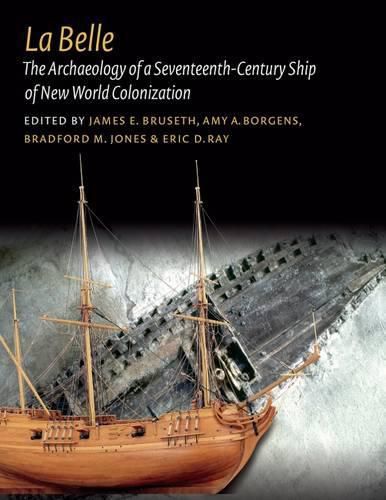Readings Newsletter
Become a Readings Member to make your shopping experience even easier.
Sign in or sign up for free!
You’re not far away from qualifying for FREE standard shipping within Australia
You’ve qualified for FREE standard shipping within Australia
The cart is loading…






In 1995, Texas Historical Commission underwater archaeologists discovered the wreck of La Salle’s La Belle, remnant of an ill-fated French attempt to establish a colony at the mouth of the Mississippi River that landed instead along today’s Matagorda Bay in Texas. During 1996-1997, the Commission uncovered the ship’s remains under the direction of archaeologist James E. Bruseth and employing a team of archaeologists and volunteers. Amid the shallow waters of Matagorda Bay, a steel cofferdam was constructed around the site, creating one of the most complex nautical archaeological excavations ever attempted in North America and allowing the archaeologists to excavate the sunken wreck much as if it were located on dry land. The ship’s hold was discovered full of everything the would-be colonists would need to establish themselves in the New World; more than 1.8 million artifacts were recovered from the site.
More than two decades in the making, due to the immensity of the find and the complexity of cataloging and conserving the artifacts, this book thoroughly documents one of the most significant North American archaeological discoveries of the twentieth century.
$9.00 standard shipping within Australia
FREE standard shipping within Australia for orders over $100.00
Express & International shipping calculated at checkout
In 1995, Texas Historical Commission underwater archaeologists discovered the wreck of La Salle’s La Belle, remnant of an ill-fated French attempt to establish a colony at the mouth of the Mississippi River that landed instead along today’s Matagorda Bay in Texas. During 1996-1997, the Commission uncovered the ship’s remains under the direction of archaeologist James E. Bruseth and employing a team of archaeologists and volunteers. Amid the shallow waters of Matagorda Bay, a steel cofferdam was constructed around the site, creating one of the most complex nautical archaeological excavations ever attempted in North America and allowing the archaeologists to excavate the sunken wreck much as if it were located on dry land. The ship’s hold was discovered full of everything the would-be colonists would need to establish themselves in the New World; more than 1.8 million artifacts were recovered from the site.
More than two decades in the making, due to the immensity of the find and the complexity of cataloging and conserving the artifacts, this book thoroughly documents one of the most significant North American archaeological discoveries of the twentieth century.